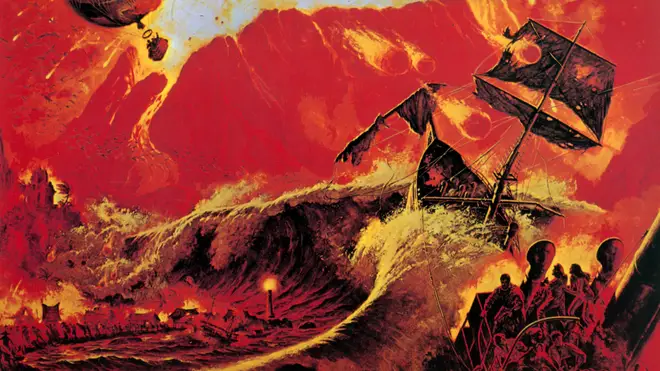The loudest recorded sound in history literally sent shockwaves around the world
11 May 2022, 21:47 | Updated: 27 October 2023, 15:55

Scientists believe this to be the loudest sound ever experienced by human ears.
Listen to this article
From the world’s quietest room (a concrete bunker where you can hear your own blood move) to the lowest recorded human voice (an American bass who can produce a deliciously gravelly G -7), history tells us that we can’t help but be fascinated by the extremes of sound.
There was also the man who broke a world record in 2018 for producing the ‘highest vocal note by a male’, which really sounded more like a whistle, as opposed to the melismatic coloratura you might expect.
But what about the loudest sound ever heard?
On the morning of 27 August 1883, on the Indonesian island of Krakatoa, a volcanic eruption produced what scientists believe to be the loudest sound produced on the surface of the planet, estimated at 310 decibels (dB).
The ear-shattering explosion caused two thirds of the entire island to collapse and is considered one of the most violent geologic events in recorded history. It triggered tsunami waves across the Indian Ocean as high as 46m (151 ft), which rocked ships in South Africa.

Halloween recital heard on the world's largest pipe organ in New Jersey
Reports from up to thousands of miles away tell of the explosion’s terrifying reach. People 3,000 miles (4,800km) away described it as “cannon fire from a nearby ship”.
2,233 miles away in Alice Springs, Australia, ranchers on a sheep camp heard a sound like two shots from a rifle.
Captain Sampson of the British ship Norham Castle, which was around 40 miles (64 km) from Krakatoa at the time of the eruption, wrote a chilling report which read: “So violent are the explosions that the ear-drums of over half my crew have been shattered. My last thoughts are with my dear wife. I am convinced that the Day of Judgement has come.”
Most the stories about the 1883 eruption have come from people far away, given no one close to it could have survived.
More than 30,000 people were killed by the volcano and ensuing tsunami. It released 20 million tons of sulphur into the atmosphere and emitted aerosols that reduced global temperatures for years.
According to The Independent, the force of the blast was around 10,000 times that of the atomic bomb dropped on Hiroshima in August 1945.
Over the following five days, shock waves from the explosion travelled all the way around the globe seven times.
Read more: Hear the sound of a 33,112-pipe organ, the world’s largest musical instrument

In England, Canada and Russia, scientists recorded spikes in atmospheric pressure. And in North Jakarta, 160km (99 miles) away from the volcano, a sound pressure level spike of more than two-and-a-half inches of mercury (8.5kPa) was logged, which is the equivalent to 172 decibels – about twice the decibels of a live rock concert.
For some extra context here, thunder can reach 120dB, a shotgun can reach 140 dB, and 150 to 160dB is usually considered painfully loud enough to rupture your ear drums.
Sound is made of pressure waves, produced when an object vibrates. When sound waves travel to our eardrum, they are transformed into vibrations, and if the pressure becomes too great, the eardrum can vibrate so violently that it ruptures.

Ultimately if the sound is loud enough, like the Krakatoa volcano at highs of 310dB, the pressure can impact your organs and cause death. See the above diagram, for extra frightening context.
More than 100 years later, on 14 January 2022, the island of Hunga Tonga-Hunga Ha’apai was destroyed by a volcanic explosion, producing a sonic boom that was heard 6,000 miles away in Alaska. The eruption is thought to have produced the world’s most intense sounds in 139 years, second only to the Krakatoa eruption, with three deaths recorded in connection to it.
In other words, the loudest sounds in the world could do a lot more than just make you cover your ears...









































